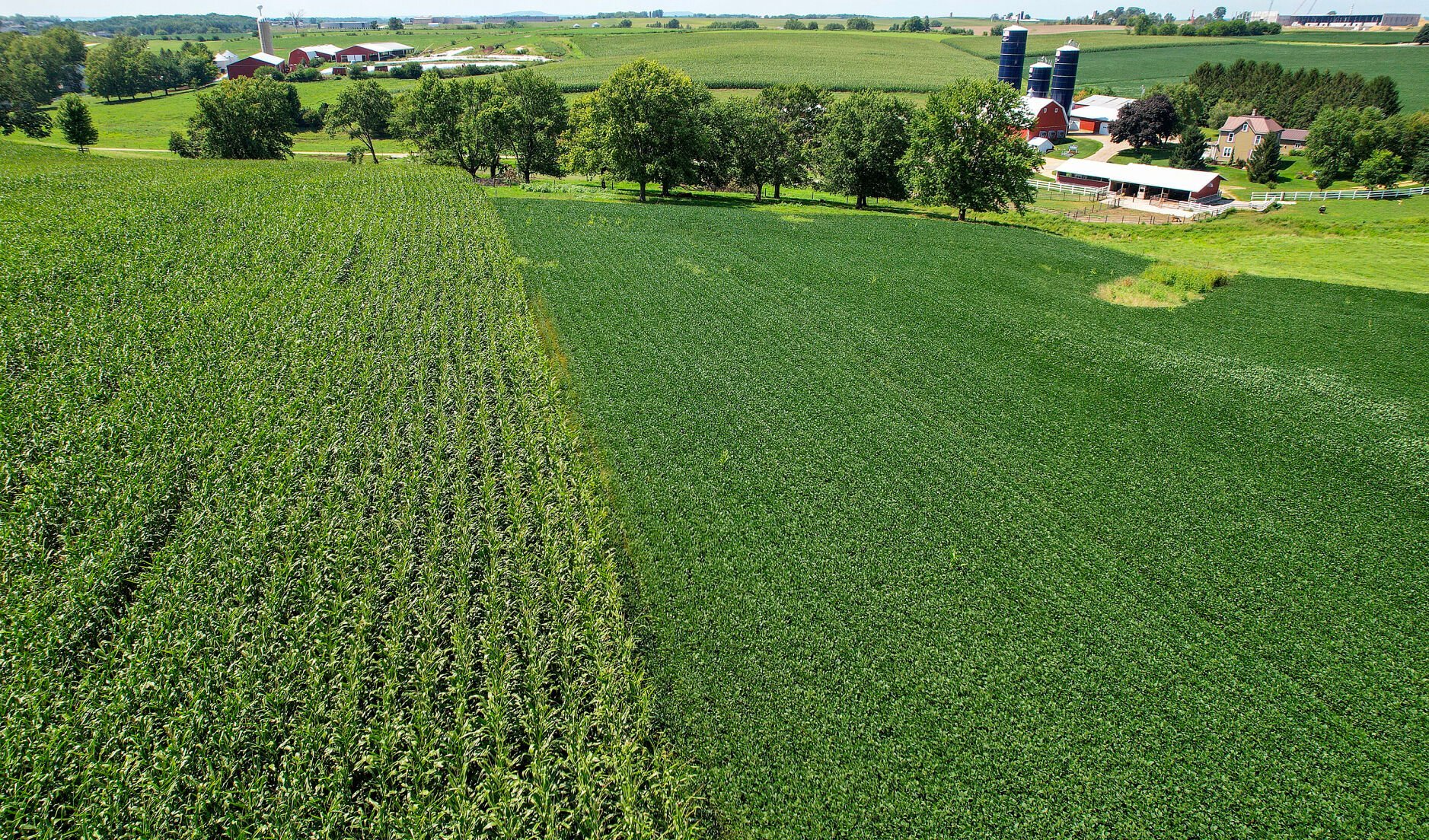While April showers bring May flowers, the substantial rain that has fallen across the tri-state area this summer might also have helped area row crops — but it depends on who you ask.
New data from the U.S. Department of Agriculture predicts near-record yields for corn and soybean farmers nationwide. It’s a prediction that local producers are hoping helps buoy their operations through a predicted steep dive in grain prices this year.
According to the data report, corn yields nationwide are projected to fall 1% from 2023, though this year’s yield could still mark the third-highest production for grain on record in the U.S. The forecast for soybeans is even stronger, with a projected year-over-year growth of 10%, the USDA reports.
But local farmers and agronomists are divided over whether local growers will see the same yields, with some farmers concerned that the area has received too much rain. Fields with good drainage have fared better overall.
Gary Lahr, a former Dubuque County Farm Bureau president who grows corn and soybeans, said his soybeans and corn appear to be stronger this year compared to last.
“That nice weather does a lot,” he said. “This year looks a lot better than the last. I think they’re looking pretty good; we have to have a good crop to keep the economy going.”
But Wayne Kramer, who grows corn and soybeans in New Wine Township near New Vienna, Iowa, and serves as the current Dubuque County Farm Bureau president, said precipitation actually killed off some of the crops in areas where the soil is more clay-based. Kramer said the periodic heavy rainfall might have caused soil to slide and suffocate crops.
“In Dubuque County, we had way too much rain … these farmers had excellent crops for years and years and years, and then we got all this rain,” he said.
Michael Dittmar, whose family farms 100 acres in Elizabeth, Ill., said because his family’s fields have good drainage, its operation was not plagued with either standing water or mold.
“If water stands on your fields, it’ll suck the nitrogen out,” he said. “But our fields … drained really well.”
Virgil Schmidt, a field agronomist with Iowa State University Extension, said that he, too, expected local yields to be in line with the USDA’s forecast, but added that it’s possible some farmers faced issues with standing water, nitrogen depletion and diseases.
“I’ll be honest, I’ve never seen, in the big picture, corn and soybeans look this good this late in the season just from a general health standpoint and yield potential,” he said.
Lahr and Dittmar expect overall yields to post strong growth, but localized areas — like Kramer’s neighborhood — might in fact end up with a noticeable decrease in reported yields once harvest rolls around, bucking the national trend.
“In Dubuque County, in New Wine Township, we’re going to get a lot less,” Kramer said. “Some of the fields look yellow and some are barren.”
Despite differing yield outlooks, tri-state farmers and agronomists alike are all keeping an eye on markets, where grain prices are predicted to fall significantly.
“That’s the thing farmers are really worried about,” Schmidt said. “Normally, if you have high yield, you get low prices, but we’re at a point now where there’s so much corn in the world that no matter how much farmers produce, the payback is going to be less than the cost of production.”
USDA forecasters recently projected that net farm-sector income will drop by 24.1% nationwide in 2024. Inflation-adjusted figures put both net farm income and net cash farm income just below the 20-year average, according to data shared by the USDA’s Economic Research Service. Net cash farm income would be about what it was in 2018, per the USDA’s estimates, though net farm income would still be higher than at any point from 2014 to 2020.
Both Kramer and Schmidt said that farmers who have not already done so should turn an eye toward cutting costs, as other dynamics like markets and weather are out of their hands.
“Have an understanding banker, stop buying new equipment,” Kramer said. “That’s why John Deere is laying off people, that’s why Kinze (Manufacturing) is laying off people. Try to fix what you have and make do.”
Schmidt echoed that point and emphasized the importance of cost cutting for farmers who are renting land or who have debt.
“For people who are renting ground, I think they need to push the pencil hard and say ‘OK, how much can I afford to pay for rent this year?’” Schmidt said. “If they can’t afford it, they need to think about walking away (from that piece of land).”



